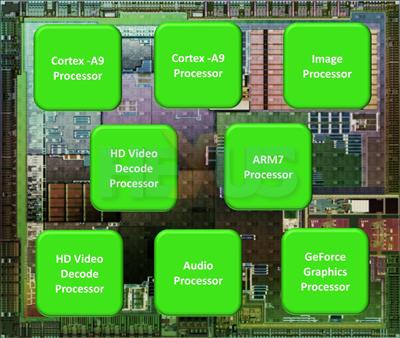SoC evolution
One thing you have to say about Apple is that its launches resonate far more than pretty much any other company in the world. The launch of the iPad brought the concept of the slate computer (we think of tablets as notebooks with swivel touchscreens) straight into the mass market.
This is both good and bad news for graphics chip-maker NVIDIA, which has combined ARM CPU designs with its own low-power graphics to make the Tegra family of SoCs. The latest one - generally referred to as Tegra 2 - uses the ARM Cortex A9 design to offer the first dual-core SoC, but its real differentiator is, of course, graphics.
This means that its optimal application is probably to run slates, which have greater graphics demands due to their larger screens. So it's great for NVIDIA that most people are now familiar with the slate, thanks to the iPad, but the bad news is that Apple has produced its own SoC, equivalent to Tegra, called the A4.
So, in a nutshell, while NVIDIA's main competitors in the smartphone space remain the likes of Qualcomm and TI, in the slate market it's definitely Apple.
NVIDIA has recently released some more details about what makes the Tegra 2 chip tick. Despite it being the first dual-core CPU SoC, NVIDIA is sticking to its PC graphics argument that performance and power are optimised by taking as much of the processing burden as possible away from the CPU.
The image below is of a Tegra 2 chip, with the eight individual processor cores highlighted. Each one is optimised for its task and power managed both independently and globally. This means, in principle, that you get the most power-efficient processing for each task. On the next page we'll have a quick look at what each one does.










